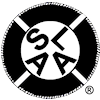The Question:
At our last group conscience, members raised the issue of being triggered at meetings when some members dressed in attire that they would see as being inappropriate. We were wondering if you have any guidance on this sensitive matter.
I guess the Tradition that comes to mind for me is Tradition 4 “…each group is autonomous…” It would make sense to me to discuss it in group conscience and if the group is so led by their Higher Power, decide on a sentence or two to be included in the script that would suggest that non-provocative clothing at meetings is appreciated.
We had this problem some time ago at some of our meetings. We found it best to talk to the member’s sponsor. If there is no sponsor, then to a program friend, if no program friends, then someone of the same sex or gender preference. We should ask this “safe” person to take the member aside and talk about this manner of dress which proved problematic for some members of the group and would this person mind terribly dressing in a more appropriate manner for S.L.A.A. meetings.
The Traditions state clearly that the only requirement for membership is a desire to stop acting out on our addiction, but as was pointed out, the first Tradition on unity is also relevant. If someone’s dress is acutely uncomfortable for others, it can distract from and affect the unity of the group. I do know groups that include a statement that says something like, “Please respect the needs of others in your use of perfumes, manner of dress and giving details of your patterns of acting out to avoid triggering others.” I have privately cautioned another woman at times about wearing skirts that were very short or sweaters that seemed provocative, and in general, I think the private approach is best, because the message bearer can also be sensitive to the individual so she or he does not feel embarrassed or rejected.
I can see that there is a Tradition 1 issue here, “Our common welfare should come first…”. The reason is very simply that if a member, man or woman, comes to a meeting dressed in a provocative manner; that is a threat to the common welfare of each group member. This can be a great trigger to many of us.
Also, Tradition 4 is important in this situation. It is up to the group to decide in a Group Conscience meeting whether or not a suggested dress code is appropriate for that particular meeting. Including a short statement regarding clothing, scents, etc is one way to handle the problem should the group decide to do this. I like the idea of having a seasoned member of the same sex (preferably the sponsor of the member) approach the member to let them know that their manner of dress might be triggering to some in the room.
Some might argue that this is not a requirement for membership because of the statement of Tradition 3, “The only requirement for membership is the desire to stop living out a pattern of sex and love addiction.” So, for obvious reasons we cannot dictate, but we can suggest. If such a situation cannot be remedied easily, it might be necessary for those who feel triggered to move on to a different meeting or begin a new meeting where they can feel safe.
I have found that meeting around a table, instead of a circle of chairs, to be preferable in this type of situation, since the table does provide for some cover. It can also be necessary to move to a different part of the circle where the view is less noticeable.
My opinion is that this would be a Tradition10 question. Another’s attire is an outside issue. If I am not triggered by another’s actions, it is my response that this is an outside issue and I need to respond as soberly as I can with God’s help. Personally, I sit in a meeting where I am not triggered by another addict and I try not to get sucked into other’s acting out behavior. Tradition 4 states that any group can do whatever is Group Conscience. It is important that everyone feels safe. In a meeting, if the Group Conscience is to have a dress code that is the group’s right. However, that there are no S.L.A.A. police trying to enforce any rule is always a problem. Anyone who is willing to stop addictive behavior is welcome in S.L.A.A.


